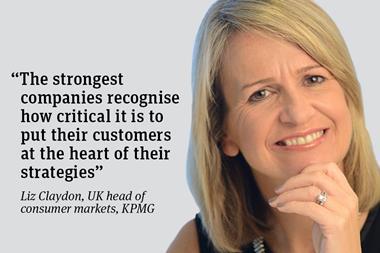But what a shame it didn't find a female director for the position. If it had, it would have been a timely coup as the focus in HR is currently squarely on women in the boardroom.
The much-anticipated report by Lord Davies, the Independent Review into Women on Boards, called for a "step change" in getting seats on the board for talented women. He said UK listed companies in the FTSE 100 should be aiming for a minimum of 25% female board representation by 2015. Currently 18 FTSE 100 companies have no female directors and nearly half of all FTSE 250 firms do not have a woman in the boardroom.
To give Sainsbury's its due, it has two female directors on its 11-strong operating board and three female non-executives. This puts it high on the list of food industry female board representation. Tesco has three female board members out of 16, only one of which Lucy Neville-Rolfe is an executive director. Meanwhile, Morrisons has two females out of nine, both non-executive, although it has set a target of reaching 30% female representation on its senior management group within three years, up from 13% now.
The rationale behind board diversity is not one of political correctness gone mad. As Davies himself said, there is growing evidence to show that diverse boards are better boards, delivering financial out-performance and stock market growth. But he stopped short of recommending a quota system, as is the case in Norway, and commentators with whom I have discussed the report agree this is the right approach. Women should get there on merit, they say.
Of course they should, but I'd like to see companies enabling women to rise into executive positions, not just non-exec roles. Women need to see females in senior management positions doing the day-to day job. For HR professionals, the goal now is to make this change happen.
They need to increase the retention of women at all levels; focus on targeted coaching and mentoring for women with top management potential; increase effectiveness in bringing women back after maternity leave; eliminate unconscious bias that may militate against women's progression and effect cultural and attitudinal change within the organisation.
Too often the same female names appear on boards across this country, yet headhunters tell me they have lists of women ready for board-level positions. The talent is out there. It is time for companies to bring it on board.
Siân Harrington is editor of Human Resources magazine












No comments yet